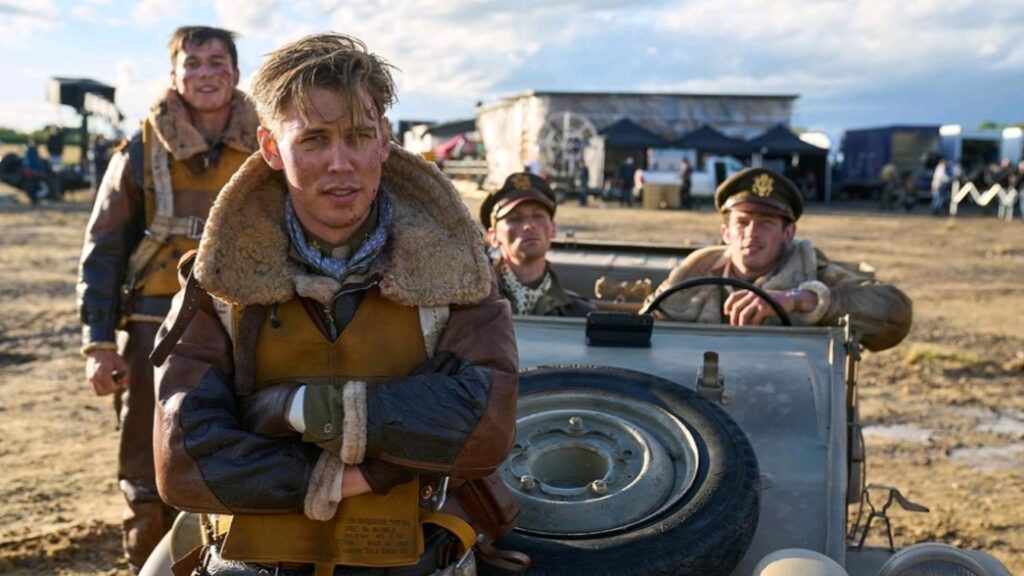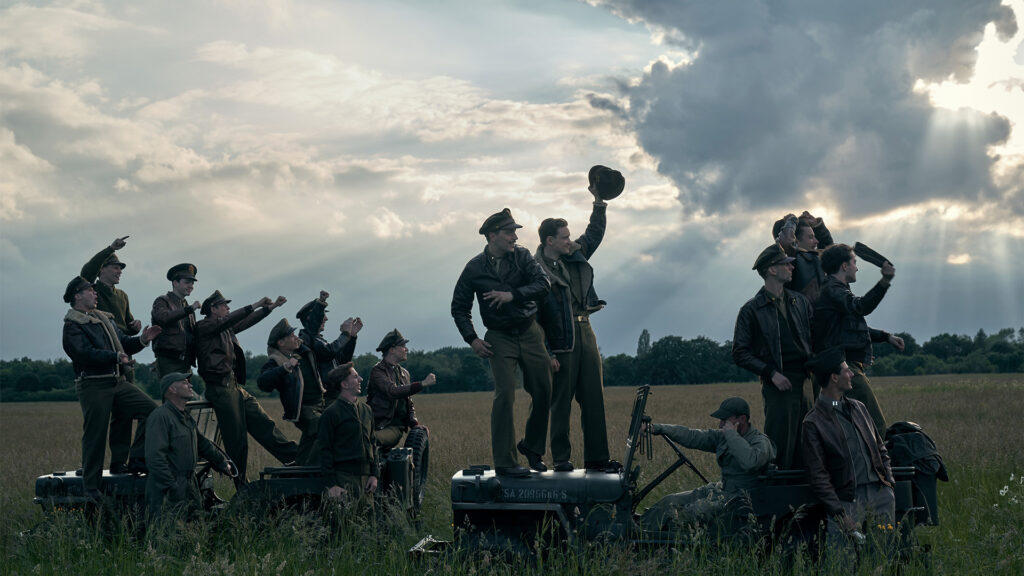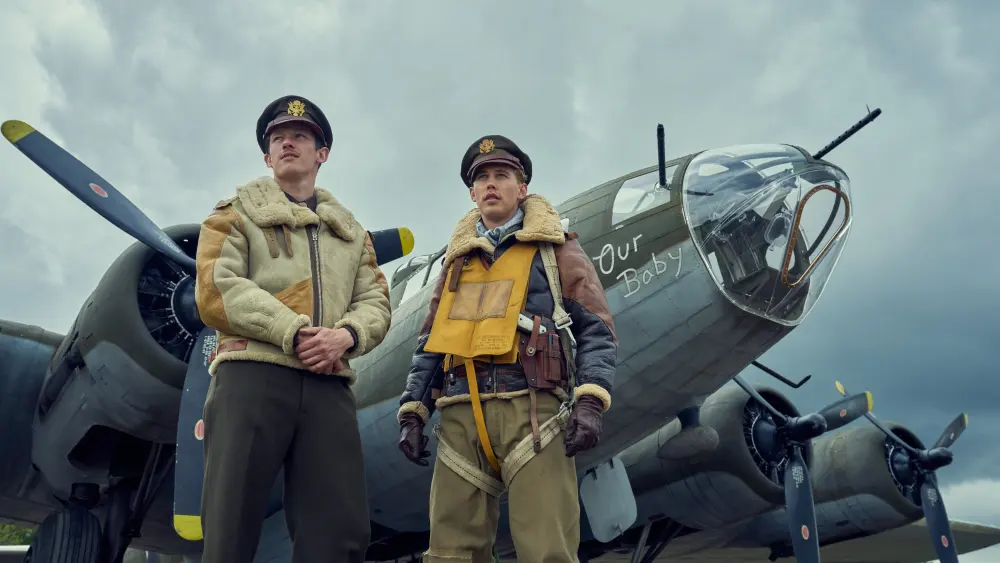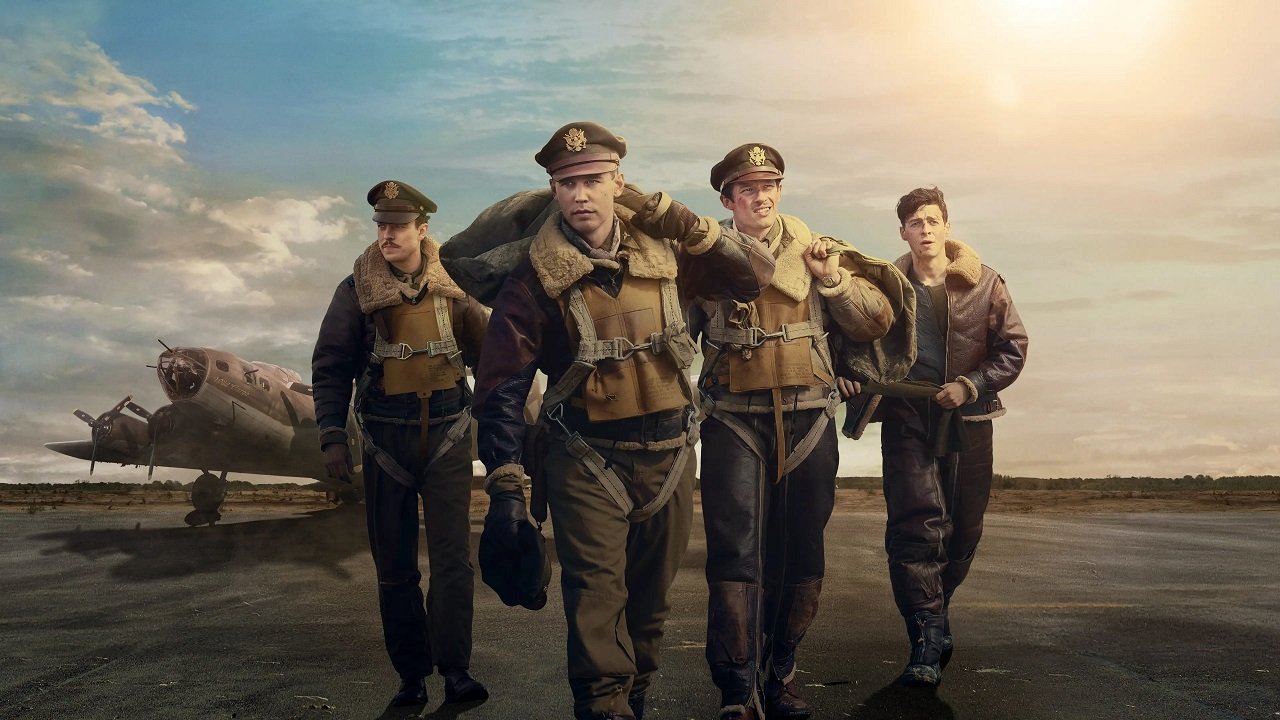Since reviewing is an individualized profession, there are situations in which a critic must share their particular inclinations with readers for them to adjust. Therefore, I would like to express unequivocally that I am ignorant about and have no interest in aviation. or military past. I was so inspired by John Orloff’s technically brilliant mash note to the “bomber boys” of the 100th Bomb Group, “Masters of the Air,” that I felt compelled to study part of the Donald Miller book that served as its inspiration. And yet with such incredibly rich source material, I’m now just as captivated by the subject as I am perplexed by what the program didn’t do.
Along with “Band of Brothers” and “The Pacific,” “Masters of the Air,” the third World War II miniseries backed by Tom Hanks and Steven Spielberg, delves into the difficulties faced by American airmen as their superiors utilized them to test theories about how best to use the nation’s massive B-17s against the Germans. Less than 25% of the Eighth Air Force in October 1943 would complete its 25 sorties, earning them the moniker “Bloody Hundredth.”
Masters of The Air Review

It can be a little overwhelming during the first few episodes, though. Several characters are named when they are first introduced and then concealed behind masks and caps. However, you start to orient yourself after a few hours. You can recognize soldiers by their accent or the color of their hair, much like an airman can recognize a mountain or a river from far, far away. The main figures soon start to emerge from the throng. Austin Butler, who is nominated for an Oscar, plays Major Gale Cleven, while Callum Turner, who may find himself starring in a similar production to Elvis Presley’s, plays Major John Egan. As the two opposing characters of this extensive tale, they go by the names Buck and Bucky.
The core of Masters of the Air, a program that includes at least six lengthy segments of terrifying aerial combat, is in many ways their friendship. These moments, which are entirely computer-generated, are viscerally compelling rather than requiring the viewer to invest in any particular character. Even if many of the soldiers do, it makes little difference if they have girlfriends or families back home to write to. You desire that they not perish. It’s the nature of Masters of the Air, after all, to know a man is doomed the moment he tells one of his friends, “I’ll see you on the other side,” before a mission. It would be as if he had written his death sentence.
Beyond the Battle Scenes to Humanizing War Machines

Seen through the lens of writing clichés, the show’s battle scenes could make viewers think of the naval warfare in Master and Commander: The Far Side of the World, the 2003 film starring Russell Crowe that acquired appeal again during the epidemic because many millennial males could identify with its stoicism. Devoted to World War II, Hanks tried his hand at being a Master and Commander a few years back with the excellent picture Greyhound, which is also an Apple title. Similar thrills may be found in Masters of the Air, which features action scenes that favor a pretty elegant manner that emphasizes danger over haphazard cutting and clearly stated objectives.
The degree of vulnerability of these B-17 Flying Fortresses is one of the several things that the show makes a point of highlighting. Every mission, the select few planes that survived would be in appalling condition, torn apart by enemy flak. Reviving them was the responsibility of a single guy, a youngster. The endeavor to humanize these machines, which kept on working for two decades after the war, is what the show aims to do.
Related:
Clone High Season 2 Review: The Decision Behind Gandhi’s Exclusion Unveiled!
Expats Movie Review: A Tapestry of Grief, Friendship, and Redemption
Airmen’s Battle Against Overwhelming Odds

However, when they met their quotas, airmen who completed 25 missions were sent home. Nevertheless, very few of them in the program can meet it. Each mission costs hundreds of lives, and the image of commanding officers atop a tower, tallying the number of B-17s that return, appears repeatedly. As the entire unit learns that about half of the soldiers who flew off would not be returning to base, a sense of fear and then despair permeates the air. A worse fate befalls those who are not instantly consumed by flames since many of them are shot down over German airspace. They are shot at and land in enemy territory by parachute, like sitting ducks on a battlefield full of hostile soldiers with weapons in Masters of the Air.
The show spends more time on the ground than in the air in its far more accomplished — at least in terms of drama — second half. Two members of the core group, veteran Rosie(Nate Mann) and navigator Crosby are left behind at the base, where they are repressing their trauma and going about their work. Bucky and Buck are left on their own. Although history nerds would recognize significant events, a lot of them occur off-screen, either because of the show’s commitment to putting characters first or because the funds ran out. The renowned Tuskegee Airmen, an all-Black pilot team, do make an appearance for us, though.
Summary
In an unexpected turn, a critic with no prior interest in aviation or military history finds themselves captivated by “Masters of the Air,” the third World War II miniseries by Tom Hanks and Steven Spielberg. Set against the backdrop of the Eighth Air Force’s challenges in using B-17s during World War II, the series explores the struggles and sacrifices of American airmen. In essence, “Masters of the Air” navigates through the complexities of war, balancing intense aerial combat with grounded character development, all while shedding light on the untold stories of airmen during World War II.

